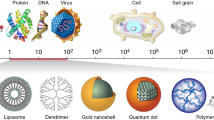Abstract
Energetic nano-sized particles have been shown to have a great potential for use in the aerospace propulsion applications. Some of the unique combustion properties of nano-particles such as very rapid ignition and short combustion times make them particularly valuable for propulsion systems; they can be included in solid fuels, solid propellants, or even as energetic gellant in liquid systems. However, due to the novelty of the application and rapid development of production techniques, there is no comprehensive understanding of what characteristics of a nano-sized particle are important in contributing to desirable performance and ease of processing into a final usable form. Previous studies have shown that HTPB-based solid fuels containing various types of nano-sized particles showed differing performance results when tested in the same hybrid rocket motor under identical conditions. Many of these particles have data available only on the basic composition (aluminum, boron, boron carbide, etc.), average diameter, and/or BET surface area. In order to better understand and correlate observed combustion behavior with intrinsic material properties, the particles of interest need to be better characterized. A variety of standard particle characterization techniques were applied to the fifteen types of particles examined in this study and the results tabulated. Some of the parameters measured were average particle diameter, specific surface area, amount of active content, and oxide layer thickness. Trends in propulsion performance measured using a parameter of great interest to the hybrid rocket community (fuel mass burning rate) in general matched trends in particle characteristics (i.e. active content, surface area), but there were some noticeable exceptions. This study indicates that there is still much more to learn about the correlation between physical and chemical properties and measured combustion performance. Other parameters that should be examined in the future include particle size distribution, degree of agglomeration, reactivity and thermal effects (oxidation rate, onset temperature for oxidation exotherm, heat release associated with any excess stored energy), etc.
Similar content being viewed by others
References
Nanotechnologies website, URL: {rf http://www.nanoscale.com/ url }
K. K. Kuo, G. A. Risha, B. J. Evans, and E. Boyer, “Potential Usage of Energetic Nano-sized Powders for Combustion and Rocket Propulsion,” Invited Paper to be presented at the 2003 MRS Fall Meeting, Boston, MA (2003).
M. J. Chiaverini, et al., “Regression Rate Behavior of Hybrid Rocket Solid Fuels,” Journal of Propulsion and Power 16, No. 1, 125–132 (2000)
M. M. Mench, C. L. Yeh, and K. K. Kuo, Energetic Materials Production, Processing and Characterization, 29th International ICT Conference, 3–01 to 3–05, (1998).
J. W. Mordosky, et al., “Spray Combustion of Gelled RP-1 Propellants Containing Nano-sized Aluminum Particles in Rocket Engine Conditions,” Paper 2001–3274, 37th AIAA/ASME/SAE/ASEE Joint Propulsion Conference, Salt Lake City, UT (2001).
R. Ellison, T. Hall, and M. Moser, “Gelled RP-1 Nanophase Aluminum Propellant,” Paper 2003–4498, 39th AIAA/ASME/SAE/ASEE Joint Propulsion Conference, Huntsville, AL (2003).
M. N. Laritchev, et al., “Aluminum Nanoparticles as the Energy Source for Mars Conditions (Multi-Sample Return Mission, Power Plants), Part 2,” Paper 2003–4443, 39th AIAA/ASME/SAE/ASEE Joint Propulsion Conference, Huntsville, AL (2003).
K.K. Kuo, “Importance and Challenges of Hybrid Rocket Propulsion Beyond Year 2000,” Invited von Kármán Lecture in the Proceedings of the 37th Israel Annual Conference on Aerospace Sciences, II–1 to II-31 (1997).
L. D. Strand, R. L. Ray, F. A. Anderson, and N. S. Cohen, “Hybrid Rocket Fuel Combustion and Regression Rate Study,” Paper 92–3302, 28th AIAA/SAE/ASME/ASEE Joint Propulsion Conference, Nashville, TN (1992).
W. Teague, A. Wright, D. Balkanli, and L. Hybl, “Effect of Energetic Fuel Additives on the Temperature of Hybrid Rocket Combustion,” Paper 99–2138, 35th AIAA/ASME/SAE/ASEE Joint Propulsion Conference, Los Angeles, CA (1999).
L D. Strand, R. L. Ray, and N. S. Cohen, “Hybrid Rocket Combustion Study,” Paper 93–2412, 29th AIAA/SAE/ASME/ASEE Joint Propulsion Conference, Monterey, CA (1993).
G. A. Risha, E. Boyer, R. B. Wehrman, and K.K. Kuo, “Performance Comparison of HTPB-Based Solid Fuels Containing Nano-Sized Energetic Powder in a Cylindrical Hybrid Rocket Motor,” Paper 2002–3576, 38th AIAA/ASME/SAE/ASEE Joint Propulsion Conference, Indianapolis, IN (2002).
G. A. Risha, B. J. Evans, E. Boyer, R. B. Wehrman, and K. K. Kuo, “Nano-Sized Aluminum-and Boron-Based Solid-Fuel Characterization in a Hybrid Rocket Engine”, Paper 2003–4593, 39th AIAA/ASME/SAE/ASEE Joint Propulsion Conference, Huntsville, AL (2003).
G. A. Risha, “Enhancement of Hybrid Rocket Combustion Performance Using Nano-Sized Energetic Particles,” Ph.D. Dissertation, The Pennsylvania State University, August 2003.
G. A. Marxman, and M. Gilbert, “Turbulent Boundary Layer Combustion in the Hybrid Rocket,” Ninth Symposium (International) on Combustion, Academic Press, Inc., New York, 371–383 (1963)
Personal communication with Dr. C. C. Johnson of NAWC-China Lake (2002).
Aluminum flake micrographs courtesy of Dr. M. Chan of NAWC-China Lake (June 2002).
C. E. Johnson and K. T. Higa, “Preparation of Nanometer Sized Aluminum Powders,” JANNAF Propellant Development and Characterization/Safety and Environmental Protection Subcommittee Joint Meeting, CPIA Pub. 647, Vol I, 137–142, (1997).
Acknowledgments
The authors would like to thank U.S. Navy NAVSEA-Indian Head and Dr. Richard Bowen at NAVSEA for sponsoring the research work presented in this paper. The donation of nanoparticles from Mr. Fred Tepper (Argonide Corporation), Dr. May Chan (NAWC-China Lake), Dr. Gary Pozarnsky (Aveka, Inc.), Dr. David Pesiri (Technanogy), Mr. Randy Cramer (NAVSEA-Indian Head), and Dr. Denny Hamill (Nanotechnologies) are greatly appreciated. The authors would also like to acknowledge Dr. Curtis E. Johnson of NAWC-China Lake for his effort in determining the active aluminum content in different nano-sized particles using a wet chemistry technique.
Author information
Authors and Affiliations
Rights and permissions
About this article
Cite this article
Risha, G.A., Boyer, E., Evans, B. et al. Characterization of Nano-Sized Particles for Propulsion Applications. MRS Online Proceedings Library 800, 240–251 (2003). https://doi.org/10.1557/PROC-800-AA6.6
Published:
Issue Date:
DOI: https://doi.org/10.1557/PROC-800-AA6.6




